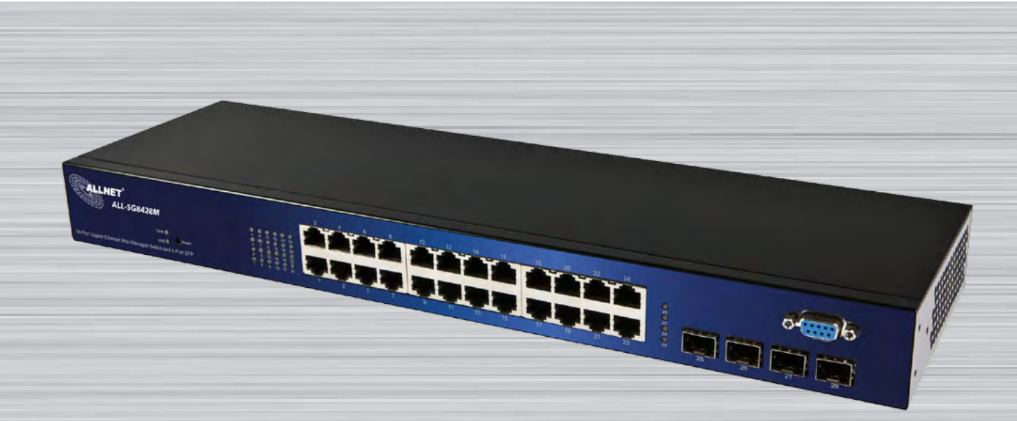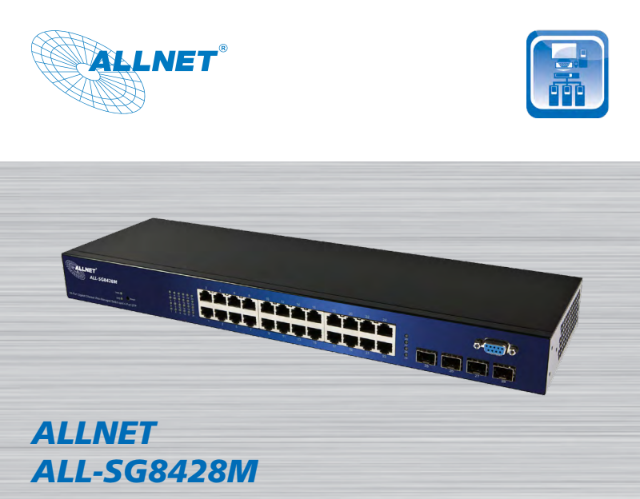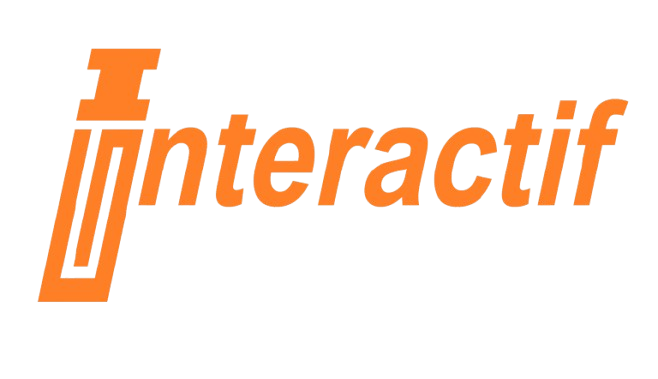edge switches

ALLNET ALL-SG8428M
PRODUCT DESCRIPTION
- 24 Port Gigabit non-blocking Switch Architektur
- Supports NWay Protocol for Network speed (10/100/1000Mbps) and Duplex mode (half/full) auto-detection
- Supports back-pressure (half duplex), flow control (IEEE 802.3x and IEEE 802.3az Energy Efficient Ethernet)
- VLAN: 64 Static / Port-Based / Tagged Based
- Link Aggregation: IEEE802.3ad LACP & Static Trunk
- IGMP Snooping: v1/v2/v3
- QoS: Port Based, Flow, 802.1p, IP-TOS, IP DSCP
- Storm control: Broadcast, Multicast, Unicast
- Fanless
- 19″ Rackmount or Wall/Desk mounting possible

- 24 Port Gigabit non-blocking Switch Architektur
- Supports NWay Protocol for Network speed (10/100/1000Mbps) and Duplex mode (half/full) auto-detection
- Supports back-pressure (half duplex), flow control (IEEE 802.3x and IEEE 802.3az Energy Efficient Ethernet)
- VLAN: 64 Static / Port-Based / Tagged Based
- Link Aggregation: IEEE802.3ad LACP & Static Trunk
- IGMP Snooping: v1/v2/v3
- QoS: Port Based, Flow, 802.1p, IP-TOS, IP DSCP
- Storm control: Broadcast, Multicast, Unicast
- Fanless
- 19″ Rackmount or Wall/Desk mounting possible
Part.No.: 127211
24-port Gigabit with 4 Combo SFP Rack-mount Web Smart Switch
Introduction:
The new ALLNET ALL-SG8428M switch provides an ideal basis for small and medium workgroups with high network and data traffic, enabling rapid data transmission in the network. With a total of 16 backward-compatible Gigabit ports and 4 MiniGBIC slots, connected computers and servers are linked reliably and with high performance.
The fanless design makes the ALL-SG8428M ideal for office environments, as it operates without generating disturbing noises. The switch is smart-manageable and supports all necessary standards such as QoS, VLAN, storm control, and IGMP Snooping, ensuring the highest performance and reliability in your network.
The robust metal housing is suitable for mounting in a 19″ cabinet as well as for wall mounting.
4 Combo SFP Open Slots:
ALL-SG8428M supports 4 Combo SFP open slots to uplink to servers, storage, or other switching devices for long loop reach applications.
High-Speed Networking and Jumbo Frames Support:
ALL-SG8428M provides an excellent solution for expanding your Gigabit network. By providing Gigabit speed, this product offers high flexibility and high bandwidth connectivity to servers, workstations, and other attached devices, saving time in transferring large files. It also supports Jumbo Frames 10K to improve network utilization of large file transfers.
Exceptionally Smart:
The ALL-SG8428M features a management interface that can be managed through a Web Browser and provides smart features ideal for network applications and basic monitoring tools to improve network efficiency. Through a web-based interface, an administrator can set up VLANs to segregate traffic, QoS to prioritize mission-critical data, RSTP to avoid network loops, link aggregation to create fat traffic pipelines, bandwidth control to limit traffic load, and IEEE 802.1X to secure port access on your network. All of these features offer extra protection on the network edge.
specifications
Request a Quote
Learn More From
Frequently Asked Questions
Multimode fiber commonly comes in 50/125 μm or 62.5/125 μm core/cladding dimensions, with bandwidth capacities ranging from 200 MHz to 2 GHz, depending on the grade. Multimode systems typically support transmission distances of up to 5 km, making them suitable for short- to medium-range applications.
In contrast, singlemode fiber—usually 9–10/125 μm—offers significantly lower attenuation and effectively unlimited bandwidth, supporting links over 150 to 200 km, especially when paired with optical amplifiers and advanced transceivers.
While singlemode fiber is less expensive per meter, its associated transceivers and equipment tend to cost more than their multimode counterparts. That said, singlemode devices are generally compatible with both singlemode and multimode fiber, whereas multimode equipment works only with multimode fiber.
Let me know if you’d like this turned into a quick-reference table or visual comparison—it’d make a solid inclusion for a fiber deployment guide.
The link budget is the difference between the transmitter’s output power and the receiver’s sensitivity. This budget must account for all signal losses along the path, including:
- Fiber attenuation due to the transmission medium
- Connector losses, such as those at patch panels or equipment interfaces
- Splice losses from mechanical or fusion joints
- Link margin, which provides a buffer for unforeseen variations
The link margin typically ranges from 2–3 dB in tightly controlled environments to up to 10 dB in more variable conditions. It is designed to accommodate:
- Component aging (e.g., light sources may degrade and lose up to 3 dB over time)
- Temperature variations affecting transmitter output or receiver sensitivity (up to 3 dB may be needed for thermal fluctuations)
- Physical cable damage and repair-induced losses (usually minor, but more relevant in harsh or industrial settings)
Always design your system for worst-case scenarios to ensure reliability. However, don’t overlook the best-case condition either—some optical receivers may exhibit erratic behavior if the incoming signal is too strong.
First, verify the optical signal strength along the link. Use an optical power meter to measure the received power at the fiber’s end point. Typical transmit levels range from –8 dBm to –15 dBm, while the receiver sensitivity is around –31 dBm, giving you a link budget of approximately 16 dB. This margin supports transmission distances of up to 10 km on singlemode fiber and about 3–5 km on multimode fiber.
If the measured power falls below the receiver sensitivity, there’s a strong likelihood of issues with the installed fiber. Ideally, initial OTDR readings should have flagged such faults.
If not, inspect the patch cords currently in use for possible defects or misalignment. A frequent oversight is the use of mismatched patch cords.
Multimode fiber types are classified by the ISO/IEC 11801 standard into five main categories: OM1, OM2, OM3, OM4, and OM5. Each type differs in core size, bandwidth, supported data rates, and maximum transmission distances. Here’s a quick breakdown:

- OM3 and OM4 are laser-optimized and widely used in modern data centers.
- OM5 supports shortwave wavelength division multiplexing (SWDM), enabling multiple wavelengths over a single fiber for higher capacity.
- All OM types are backward compatible in terms of connectors, but mixing core sizes (e.g., OM1 with OM3) can cause performance issues.
